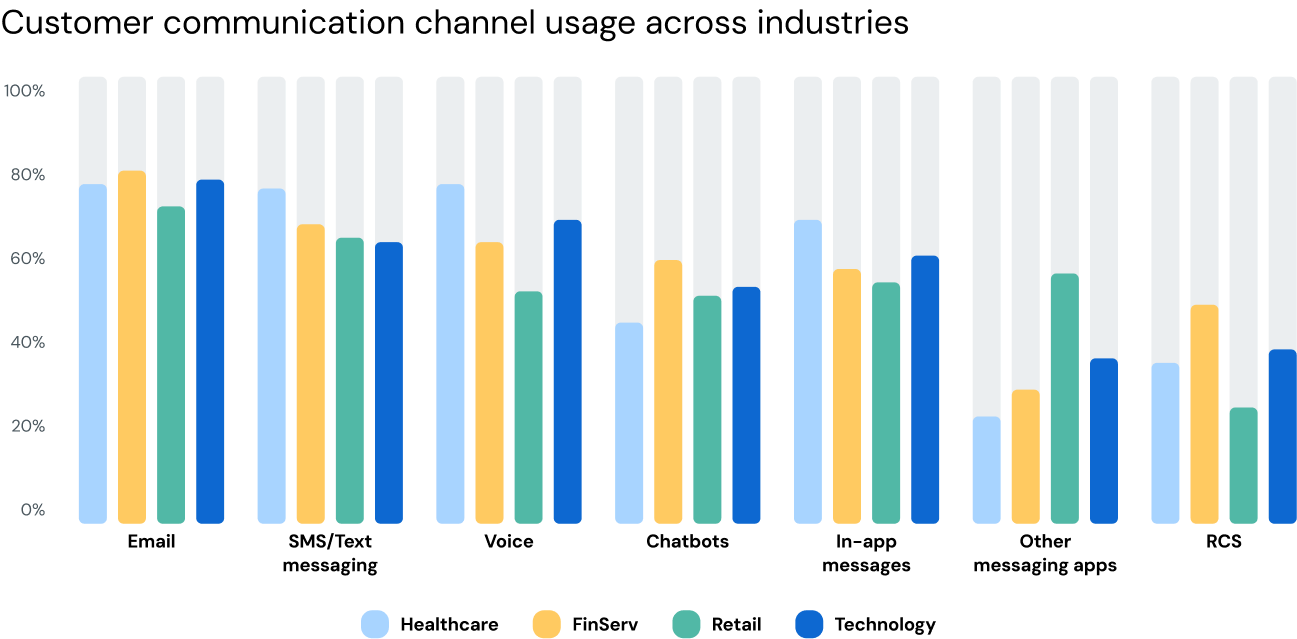Challenge 3
Integrating communications and applications
If an application or platform such as a client/patient portal is part of the customer experience, you’ll rely on developers to integrate communications with your app.
This is often done using APIs and SDKs that make it fast and efficient to connect channels like email, voice, and text without building everything from scratch. But there can still be challenges…
Our survey found that a slightly higher number of respondents view cost (17%) and security (18%) as the biggest issues when connecting applications and customer communications.
Besides those two options, however, most other challenges were chosen by between 8% and 12% of respondents. This suggests that all these factors may be problematic, and each business has unique concerns.
Finding the right people and partners to work with makes overcoming a variety of challenges much easier.








